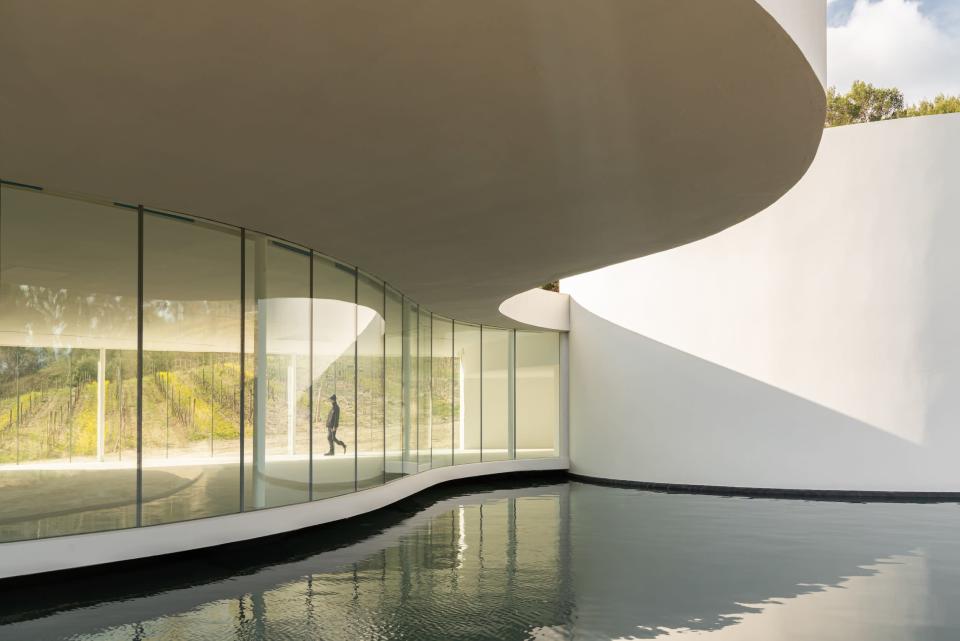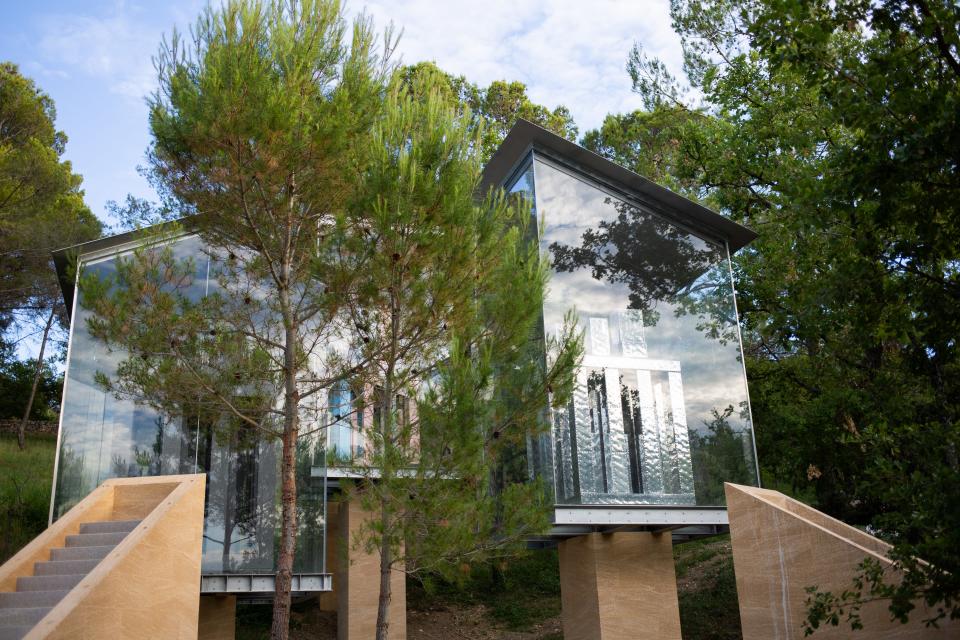[ad_1]
There’s something about Paris and the South of France—specifically Aix-en-Provence—that tends to attract the world’s most acclaimed creatives. After all, Brazilian architect Oscar Niemeyer admitted that he would only leave his beloved Rio de Janeiro for the City of Lights. Although he never ended up permanently leaving Brazil, Niemeyer did leave behind a collection of sensuous, curved architectural masterpieces throughout France, the place that offered him refuge and space to thrive during the period of cultural lockdown in Brazil in the 1960s.
When the military dictatorship in Brazil rose to power by way of a coup in 1964, many intellectuals were forced into exile, including Niemeyer. And like many creatives, he landed in France, where he designed some of the country’s most iconic structures, including the Communist Party’s headquarters, the L’Humanité newspaper offices, the Maison de la Culture du Havre, the Labor Council Building of Bobigny, and even a private residence on the shores of Saint-Tropez.

Oscar Niemeyer’s pavilion at Château La Coste consists of an exhibition space and auditorium. The modern building is a classic Niemeyer design with curved architecture and an abundance of glass.
Photo: Stéphane Aboudaram
Though the architect passed away a decade ago, he left a detailed sketch—which took him more than a year to perfect—of a building to be erected in Aix-en-Provence’s Château La Coste. The building, which will open to the public in June, is a pavilion that he designed in tandem with Jair Valera, who heads his own architecture studio dedicated to continuing Niemeyer’s legacy. “I worked with Oscar for over 30 years, participating in his creations, developing, and coordinating his projects. Of course, he had a great influence on my architecture and my personal life. He thrilled me with each new project,” Valera notes. The most recent project of the late Brazilian patriarch, one that Valera was particularly involved with, is the Aix-en-Provence pavilion that will join a collection of other works by equally renowned artists and architects, including Frank Gehry, Hiroshi Sugimoto, Louise Bourgeois, Sophie Calle, Tracey Emin, and Jean Nouvel.

The highly modern Art Center is designed by AD100 architect Tadao Ando.
Photo: Andrew Pattman
“Each space is very different in scale and ambiance. From the semi-underground V-shaped project of Renzo Piano to the 26-meter cantilever of Richard Rogers,” Daniel Kennedy, art center manager at Château La Coste, says. Niemeyer designed the pavilion as his final gift to the country whose people and landscapes he loved dearly. He considered the Château La Coste an ideal site to set his final token of affection to France.
Built in 1682 by the Bishop of Aix, the château spans nearly 500 acres. It is a vineyard with a 30-suite luxury hotel, five restaurants, and a winery designed by Jean Nouvel. The property also happens to house some of the most impressive artistic and architectural feats in the world. In fact, there are 45 major contemporary artworks installed both in the open air and within the château’s four rotating galleries. Plus, every year, artists and architects alike are invited to visit the massive property and create a site-specific work.

The Frank Gehry–designed structures at Château La Coste house a collection of Tony Berlant sculptures.
Photo: Vincent Agnes
An exhibition space and auditorium, the pavilion is set behind a curved, glazed elevation that leads to a 1,250-square-foot gallery, which sits prominently next to a cylindrical auditorium. The pavilion instantly reflects Niemeyer’s work, referencing the surrounding nature and existing in perfect harmony with it. When Niemeyer was invited to consider designing a space for the château’s rolling hills, he was instantly captured by the idea. He even said that wine is one of the most important symbols of mankind’s presence on Earth. It took him more than a year to both master the look for the new space and to find a suitable site on the property, but more than a decade after he started his sketches, the pavilion is finally ready for the public to enjoy.
Originally Appeared on Architectural Digest
[ad_2]
Source link






More Stories
Planning a Garden Layout – 9 Steps to Success
Kitchen Design – Choosing the Right Design for Your Kitchen
How to Design a Small Front Garden